A Brief History of the Gender Parity Movement in Theatre
This piece continues a partnership between HowlRound and the League of Professional Theatre Women (LPTW). In 2012, LPTW launched its journal WITOnline, and in 2015, it will become a searchable resource for the field, building a women's history of theatre through in-depth profiles, interviews, and articles. Find all WITOnline-HowlRound content here.
In October 1978, the Feminist Theatre Study Group picketed five shows on London’s West End, handing out leaflets that began with a few questions. To wit,
Did the characters in this play imply that:
- Blondes are dumb?
- Wives nag?
- Feminists are frustrated?
- Whores have hearts of gold?
- Mothers-in-law interfere?
- Lesbians are aggressive?
- Intellectual women are frigid?
- Women who enjoy sex are nymphomaniacs?
- Older women are sexless?
We are a group of theatre workers who are tired of portraying these cardboard cutouts. We want theatre managers, directors, and writers to stop producing plays which insult women.
At that point, the group Action for Women in Theatre had looked at US theatres from 1969 to 1975, releasing a study that found that the number of female playwrights and directors working in regional and off-Broadway theatres was at 7 percent. Women were not merely getting insulted more than men, they were also getting hired a lot less. The two things were perhaps related.
While the numbers have improved since then, the gender imbalance has continued to exist to the present day.
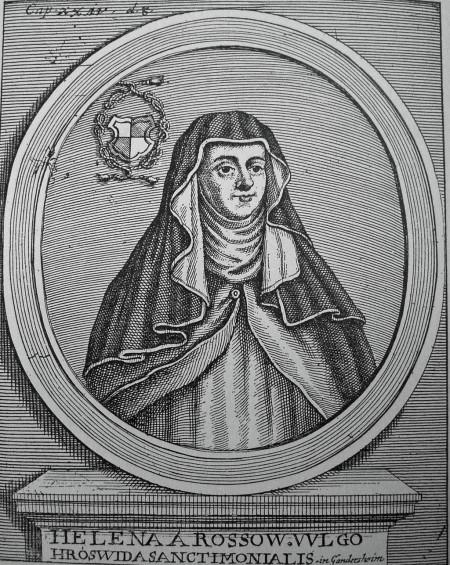
German canoness Hrosvitha of Gandersheim.
Photo by Wikipedia.
We live in a world dominated by male imagination. Guys write 80 percent of produced plays and commit 80 percent of violent crimes, while the rest of us try to catch up with the former and avoid the latter.
I myself became aware of it gradually and then suddenly. I remember the moment a consultant for a certain theatre suggested I apply for a playwriting fellowship designated for disadvantaged minorities because at that theatre, “women are considered a minority.” More profoundly, I remember a town hall meeting where discussion topics ranged from historical statistics to the public’s received image of a playwright as a “bad boy” or “angry young man.”
We live in a world dominated by male imagination. Guys write 80 percent of produced plays and commit 80 percent of violent crimes, while the rest of us try to catch up with the former and avoid the latter.
In case you missed the theatre industry’s gender parity movement, here’s a recap: women have been writing plays for millennia and landing productions for centuries. Over time they’ve also come to play key roles onstage and backstage. But female theatre artists of all kinds still find themselves bonking their heads on a glass ceiling known as the “glass curtain.”
When conversations about equality heated up in the late 1960s, gender disparities were the norm in most professions. Over time, some occupations closed their gender gap (for instance, pharmacist), but some did not (for instance, dramatist).
Theatre seems like a relatively progressive industry, yet here it lags behind.
While many are working to change that, at times new conversations happen without a sense of precedent. Folks are not always fully aware of what came before them, or what others are doing now. Eight years ago, Cindy Cooper provided a helpful timeline of the movement (1979–2009). Updating it could require graphical software that thinks in three or four dimensions. A full history would fill a volume.
What can be done here? I can offer an overview, via the answering of some Frequently Asked Questions.
Is this even documented?
Widely. It has to be or else no one would believe it! Many of these studies and tallies are available online, beginning with the landmark NYSCA study "Report on the Status of Women: a Limited Engagement?" (2002), by Susan Jonas and Suzanne Bennett, which is full of insights and well worth revisiting today. Here is just a partial listing of studies:
Action for Women in Theatre: A Study on Employment Discrimination Against Women Playwrights and Directors in Non Profit Theatre (1969-1975) released by Action for Women in Theatre (1976), NYSCA’s Report on the Status of Women: A Limited Engagement (2002), The Status of Women in Canadian Theatre (1982), League of Professional Theatre Women’s Directors and Designers Report on Sex Discrimination in the Theatre (1983), What Share of the Cake?: The Employment of Women in the English Theatre (1994), Report on the Status of Women Directors and Playwrights in the New York City Theatre (1998), The Status of Women in Theatre—The Ontario Experience (2004), Sphinx Theatre Survey (London, 2006), Adding It Up (Canada, 2006), Opening the Curtain on Playwright Gender: An Integrated Economic Analysis of Discrimination in American Theatre (Princeton, 2009), Chicago Storefront Summit study (2009), Gender Equity Report (Chicago, 2010), LAFPI’s The Study (Los Angeles, 2011), The Diversity/Inclusion/Gender Parity Task Force Report (2013), Women’s Leadership in Resident Theatres—a gender equity study by the Wellesley Centers for Women in partnership with the American Conservatory Theatre (A.C.T.) (2013-ongoing), Gender Statistics—Theatre in Sydney (2014-ongoing), Writing by the Numbers (2014-ongoing) LPTW’s Women Count: Women Hired Off-Broadway 2010-2015 (2014-ongoing), Not Even: A Gender Analysis of 500 San Francisco/Bay Area Productions from the Counting Actors Project 2011-2014 (2015), Dramatists Guild/Lillys’ The Count (ongoing), DC Theater Demographic Analyses (2012-ongoing), A Gender-Based Analysis of Theatre Awards in Canada (1992 – 2015), Purple Seven Gender and Theater Study (2012–2015), Achieving Equity in Canadian Theatre: A Report with Best Practice Recommendations (2015), The National Voice—Australia Writers Guild Report (2015), Who Designs in LORT Theatres by Gender: Infographic (2015), Who Designs and Directs in LORT Theatres by Gender: Phase Two (2016), StageSource Gender Parity Task Force study (2016).
Has it been discussed?
Frequently. Perhaps most memorably in “Not There Yet,” an essay written for American Theatre Magazine by Marsha Norman in 2009, and in this 2010 speech by Theresa Rebeck. Those are two good places to start if you want to catch up on reading.
There have also been scads of conferences and panels, including:
Women and Theatre Program Conference (annual pre-ATHE conference since 1980), The Standing Conference of Women Theatre Directors and Administrators (London) (1980, ongoing), “Plays by Women: What’s the Difference?” Dramatists Guild Committee for Women (1985), “Women on Broadway: Do They Make a Difference?” Outer Critics Circle (1986), “Women In Theatre: Mapping the Sources of Power“ Women’s Project and Productions (WPP) (1997), NYSCA/Women in Theatre Panels and Roundtables series (1999-2001)—“Pointed View”: a three-part symposium on gender and theatre (1999), “Why Do Numbers Matter? The Thorny Question of Underrepresentation” LPTW & WPP (2003), “Re-Opening the Rina Fraticelli Report” (Toronto) (2003), Town Meeting with Artistic Directors: Proposals to Reach Gender Parity on New York Stages (2008), 50/50 in 2020 series of Town Hall Meetings, New York (2009), Association for Theatre in Higher Education/American Alliance for Theatre Education “The Glass Proscenium,” New York (2009), “Women in Theatre: Issues for the 21st Century” Conference, Princeton (2009), Working Groups (2009), Women’s Initiative Symposium —“Women in Theatre: Achieving Gender Parity” (2009), Vamps, Vixens, and Feminists Conference (London, 2009), Women Playwrights International Conference (Sweden, 2012) Gender Parity, Playwriting, and Production (2013), The Summit, Washington DC (2014), “The Glass Curtain,” Washington DC (2015), Neo-Political Cowgirls’ Women of the Theatre Panel, New York (2015), Necessary Exposure Parity Panels, New York (2015–6), Good to Go Parity Summit, New York (2016), Women in the Arts and Media Coalition’s Percolating Gender Parity in Theatre—A Forum (2015), Statera Foundation annual Conference on Gender Parity in Theater (2015, 2016), Women in Theatre Conference: Challenge and Connection (2016), “Onward and Upward: a Public Forum for Women in Theatre,” Chicago (2017), Unconscious Bias: Achieving Gender Equity (upcoming, 2017).
So where did these discussions lead?
At times, they led to the forming of organizations or the launching of initiatives. The idea of the League of Professional Theatre Women, for instance, was born at an American Theatre Association Conference.
Having panel discussions about parity was important, but could only go so far. Susan Jonas says, “I was contacted to speak on my millionth panel and I balked and said we have to stop talking about it—showing stats—as that was not provoking change… and demand very specific change.” And she suggested trying to get to 50/50 by 2020, leading to the founding of that organization.
Soon more panels would beget more specific actions. At times panel participants would raise subjects such as examining bias in awards, reexamining the canon, and supporting women artists by buying tickets to their productions—and then would be inspired to found other groups that addressed those issues directly, adding to a growing list of organizations and groups including:
Melbourne Women’s Theatre Group (1974–77), Women’s Committee of the Dramatists Guild (1979–89), Women in Entertainment (London, 1980), League of Professional Theatre Women (1981), International Centre for Women Playwrights (1988), Women Arts (originally The Fund for Women Artists) (1994), Women Count (2003), Equity in Canadian Theatre: The Women’s Initiative (2004), Los Angeles Women’s Theatre Project (2007), 50/50 in 2020: Parity for Women Theatre Artists (2009), Works by Women (2009), 17percent (London, 2009), Los Angeles Female Playwrights Initiative (2009), History Matters/Back to the Future (2009), Dramatists Guild Women’s Initiative (2009) Lilly Awards Foundation (2010), Tonic Theatre (2011), The Kilroys (2014), The Bridge Initiative (Arizona, 2014), Equity in Theatre (2014), #WakingtheFeminists (Ireland, 2015), Statera Foundation for Women in Theatre (2015)
What about theatres?
Yes. Soon it started happening. Reviving “lost” women playwrights who had been erased from the canon, discovering new ones and publishing them in anthologies. Meanwhile, a number of theatres and theatre festivals started cropping up to fill the gender gap for female theatre artists, performers, and even characters, for example:
New Feminist Repertory (1969), Women’s Interart Center (1969), Interart Theatre (1972), Westbeth Playwrights Feminist Collective (New York, 1971–1975), Women’s Theatre Cooperative (Vancouver, 1973–1974), Circle of the Witch Feminist Theatre (US Midwest, 1974–1980), Redlight Theatre (Toronto, 1974), Spiderwoman (1975), Monstrous Regiment Theatre Company (London, 1975–1993), Nellie McClung Theatre (Winnipeg, 1976–1980), Split Britches (1981), Works by Women (1976–1983), The Women’s Project (1978), Nightwood Theatre (Toronto, 1979), Mrs. Worthington’s Daughters (London, 1978–1982), WOW Café Theatre (originally an international women’s theatre festival, 1980), Scarlet Theatre (formerly Scarlet Harlets, London,1981), Vitalstatistix (Australia, 1984), International Women in Experimental Theatre Conference (Cardiff, 1986), Character Ladies (London, 1986–1991), Brava! Theater Center (San Francisco, 1986), Nora Theatre Company (1987), Five Lesbian Brothers (1989), Voice & Vision (1989), The Company of Women (1990), Six Figures (1990), New Perspectives Theatre (1991), New Georges (1992), Los Angeles Women’s Shakespeare Company (1993), Renaissance Theatreworks (Milwaukee, 1993), Looking Glass Theater (1993), Women’s Theater Company (1993), Journey Company (1995), Judith Shakespeare Company (1995), Dusky Divas (1998), Echo Theatre (Dallas, 1998), Hourglass Group (1998), Women of Color Productions (1998), Women’s Shakespeare Company (1998), Estro Tribe (1999), Stockyards Theatre Company (Chicago, 1999), Theatre Unbound (Minneapolis-St. Paul, 1999), VH Theatrical Development Foundation (1999), Women’s Expressive Theatre (W.E.T.) (1999), Airmid Theatre Company (2000), Estrogenius Festival (2000), Lady Cavaliers (2000), The Queen’s Company (2000), Venus Theatre (Maryland, 2001), The Women’s Theatre Project (TWTP) (Florida, 2001), 20% Theatre (Chicago, 2002), Tennessee Women’s Theater Project (2002), Arizona Women’s Theatre Company (2003), 3Graces (2004), Potluck Productions (Missouri, 2005), Rosalind Productions (2005), And Toto too Theatre Company (2005), Live Girls! Theatre Company (Seattle, 2005), Moxie Theatre (2005), 20% Theatre (Twin Cities, 2006), Nora’s Playhouse (Boston, 2009), WAM Theatre (2010), F.A.B. (“For, About, and By”) WOMEN (2010), Artemisia, A Chicago Theatre (2011), Infinite Variety Productions (2011), The Habitat (2013), 365 Women a Year: A Playwriting Project (2014), Women’s Voices Theatre Festival (Washington DC, 2015), Parity Productions (2016), North Carolina Women’s Theatre Festival (2016).
Were legal avenues explored?
Yes. There have been proposals for connecting public funding to equal opportunity efforts. They have not caught on.
Have there been protests?
Sure! At one point it was proposed to hold a Women in Theatre “Day of Absence” to draw attention to the problem of disparity in hiring women. Women Stage the World, an arm of LPTW, holds an annual costume parade in Times Square featuring historical women to raise awareness of the problem. Guerilla Girls have staged “Girlcotts” where you boycott, or rather girlcott, theatres that don’t hire girls.
Has there been positive advocacy, too?
Yeah, that’s one thing that gets discussed in the discussions—the need not only to protest and complain and girlcott but to support women in a positive way. When a fellow on one panel during The Summit in DC suggested there were no plays by women “in the pipeline,” the Kilroys began putting out an annual list of new plays by women recommended by literary managers and directors. The web page “We Exist,” an open-source listing of female and female-identified playwrights, also came into being in response to conversations at The Summit. A database of theatre artists including directors and designers is now being built by Parity Productions.
There have been many examples of positive advocacy; here are just a few:
Jane Chambers Award (1974), Susan Smith Blackburn Prize (1978), Women in Entertainment publication of a Writers’ Directory (London) (1981), LPTW Awards (1998), Vibe Theater Experience (2002), The First 100 Years: The Professional Female Playwright 2002), TV Series Women in Theatre: Dialogues with Notable Women in American Theatre, produced by LPTW, aired on CUNY TV (2005), Wasserstein Prize (2007), Girl Be Heard (originally Project Girl Performance Collective, 2008), Leah Ryan’s Fund For Emerging Women Writers (2008), Dramatists Guild First National Conference keynote address on gender parity on American stages by Julia Jordan (2011), ICWP 50/50 Applause Awards (2012), Association for Theatre in Higher Education (ATHE)’s Women and Theatre Program’s WTP Achievement Awards (2010), Lilly’s: Annual Awards (2010), Gilder/Coigney International Theatre Award (2011), On her Shoulders (2012), Society for the Preservation of Theatrical History (2013), The Drama League’s Beatrice Terry Artist in Residency (2014), The Interval (2014), Shakespeare’s Sister Playwriting Fellowship (2014), Lilly Awards Foundation Family-Friendly Writers’ Colonies Initiative (2015), Statement on Harassment (2015), LPTW Seal of Approval (2015) Women in Theatre, Kilroys List (2014), Parity Party (2015), HowlRound series “Gender Parity in Theatre: An Exploration of How Change Happens and Where We Go From Here” (2015), Heidi Thomas Initiative Grant (2016), NYC Mayor’s Office of Media and Entertainment gender initiative fund (announced 2016), Women and Transgender Artist Database (formed 2016, currently in beta).
But isn’t it marginalizing to give women their own awards, publications, festivals, and theatres? What about increasing the numbers of women working at existing institutions?
Indeed. At a 2009 panel sponsored by LPTW and New Perspectives Theatre Company, the artistic director of the Women’s Project said nothing would make her happier than to have the mission of the Women’s Project become obsolete. It hasn’t.
All these different organizations—with sometimes overlapping or possibly redundant projects—do they ever get together and try to coordinate all this work?
Yes. For instance, the Women in Arts and Media Coalition, founded in 1989, functions as an umbrella group. But even as coalitions form, it’s easy for people not to be aware of groups in other places or from other time periods.
What about working from within?
There’s been some of that, especially in the UK. An organization called Tonic Theatre has engineered behind-the-scenes conversations.
Was it always like this?
No. In London from 1695–1706, of all things, it is estimated that women wrote between 33 percent and 50 percent of all produced plays.
But shouldn’t we just forget about gender, and focus on who’s writing the best play? Of course! But there are a few issues to consider.
1. Studies have shown that a script submitted with a male author’s name will get better recommendations from literary departments than the same script submitted with a female author’s name. So the quality of the script gets overshadowed by gender bias.
2. There are some people in this conversation who believe that women are writing different plays than men are—that there are female aesthetics that are underappreciated. Of course not everyone believes this, and (see 1) even where we share the same exact aesthetic or are even the same person writing the same play a bias can prevail. But there may be some room to explore our definition of “best” play since aesthetics are culturally determined.
3. We are not always seeing quality plays anyway. A female stage manager who was surprised to learn that theatres are still not hiring women and men in equal numbers pointed out that members of both genders write both good and bad plays, and bad plays by men still get staged in greater numbers, concluding, “men have terrible plays produced, why can’t we?” While this sounds like a glib provocation, it also speaks to the underlying economics of the problem. Plays that get a first production often go on to greater opportunities, even when those plays are not the greatest, and female playwrights seemingly have fewer of those opportunities.
But even bringing up this issue is so impractical! Don’t commercial producers just want to choose the play that will earn the most money?
One study that looked at Broadway numbers showed that plays by women sell an average of 3,538 more seats per week than plays by men. Over the next couple of years, the representation of female dramatists did not change. Indeed, it had not changed in a century.
It should be noted that in musical theatre, women are even less represented. Some female musical theatre writers talk about that experience here.
What helps?
Given the state of unconscious bias, it helps when theatres read scripts “blind”—without names. Conversely, it helps when ticket buyers educate themselves and see work generated by artists of more than one gender. Women buy over seventy percent of theatre tickets and might purchase differently if they knew about the ghettoization of female playwrights.
But ideally we want to get to a better place, where it’s blind reading rather than awareness of gender that leads to equal numbers—and to an even better future place where we can just refer to “women playwrights” as “playwrights.” Of course blind reading has its limits, as it really only works at the entry level, and won’t help with known plays or second productions.
Certain Canadians have made a helpful list of best practices.
Finding ways to honor and spotlight women helps, too: If you missed them, I highly recommend watching the League of Professional Theatre Women Awards here and the Lilly Awards here.
After seeing those, your questions might change.
What’s the conclusion? There’s a bias against women?
I would argue the bias runs even deeper. It’s not just against women, it’s even against women’s stories and viewpoints. I know a man who never had trouble getting his plays produced until he wrote a play about two women! On the flip side, women are expected to write about women—so paradoxically it becomes harder to place a play written by a woman about a man. This problem is affecting not only female writers, but stories by and about authors of both genders.
Why does it happen?
There are heaps of reasons. It’s been said that we can’t fix it until we fix education and un-erase the many women erased from the canon, changing our image of what a dramatist is. It’s been said we can’t fix it without changing economics, awards, and unconscious bias—though the Boston Symphony Orchestra changed almost overnight just by putting a curtain up during auditions. Some think it runs deeper, into the nature of who we want characters to be. We accept flawed male characters but not women who are as flawed. There are biases in our very language, where the best thing you can say about a play is that it’s “masterful.” But “mistressful” wouldn’t be as much of a compliment.
What can we do? Engage in in-depth problem solving and complex discourse about this complicated issue. Then simplify the conversation for the outside world, so the audience will get it.

Can critics help?
Yes, but critics also have biases. A study of 6,000 plays in the UK concluded that reviewers tend to prefer plays with casts that have majority of characters of their own gender. And of course female critics are underrepresented, too.
What can we do?
Engage in in-depth problem solving and complex discourse about this complicated issue. Then simplify the conversation for the outside world, so the audience will get it.
What’s the big deal?
Four decades after those early industry reports and picketers, many female characters are less like “cardboard cutouts,” but some of the stereotypes linger. And so does the disparity. Women still get objectified, consigned to secondary roles onstage and backstage, offstage and in life. So many voices are still not represented.
In A Room of One’s Own, Virginia Woolf imagines the difficulties a female dramatist might have had in Elizabethan times, suggesting that a sister of Shakespeare’s with similar genius would have faced impossible obstacles trying to write for the stage. But Woolf invites us to imagine the work that could be done by such a woman if the obstacles did not exist. In the spirit of that vision, actor and author Ellen McLaughlin created a fellowship program for female playwrights, the Shakespeare’s Sister Fellowship, which she has called “our way of defying attempts to silence the equality of voice that makes for civilization.” Looked at in that way, nothing less than civilization itself is at stake here.
Um, civilization? But aren’t you just talking about putting on plays?
Theatre is a generative medium. Ideas that begin there reverberate beyond to other stages, and to other media such as film and TV. They can travel great distances. Hearing different perspectives there could only enhance our capacity for empathy, especially if they’re the perspectives of those who commit the fewest violent crimes.
Not only women, but all marginalized groups could bring a lot to the table—if they just had a seat at the table, instead of a seat in the audience looking at the table.
And when all viewpoints can be heard onstage, that will change what gets heard in the world.

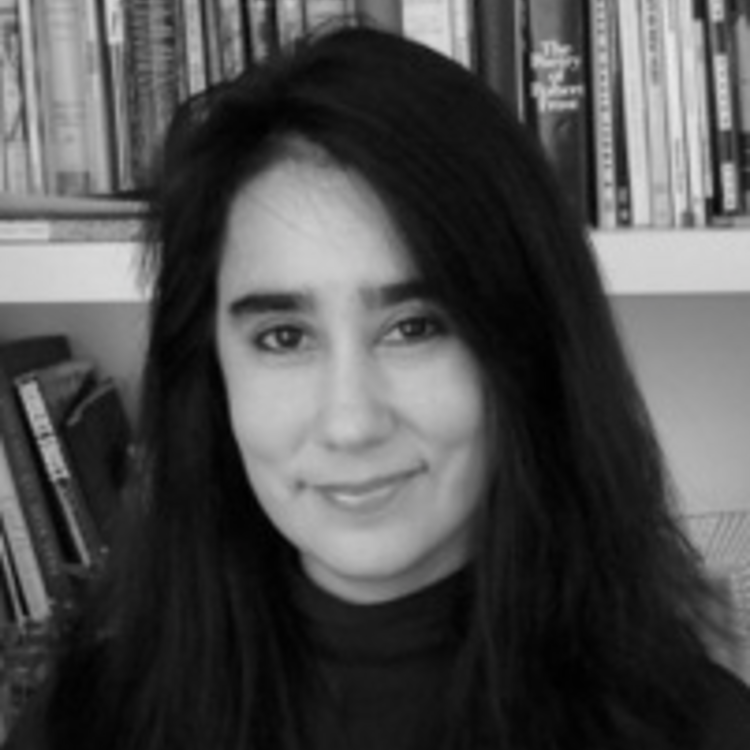
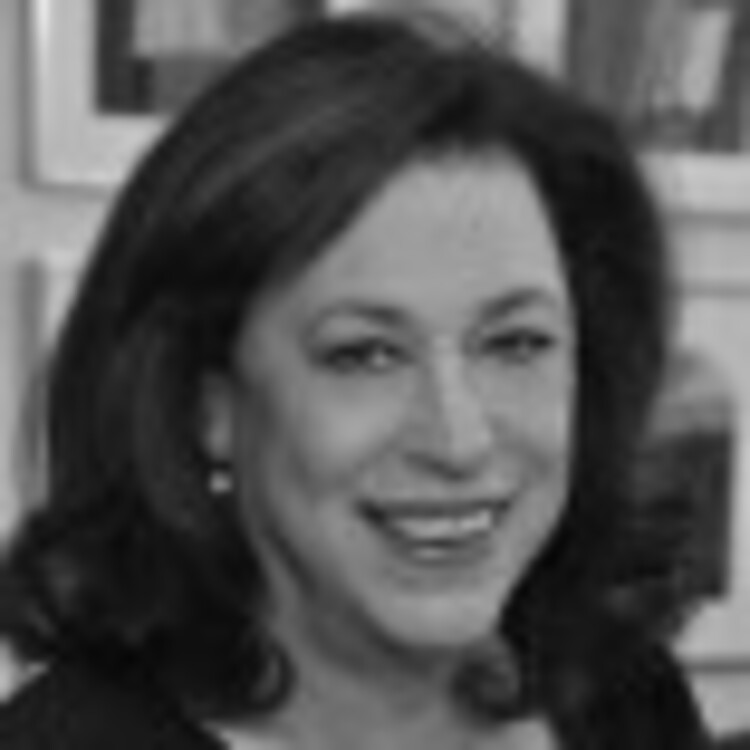

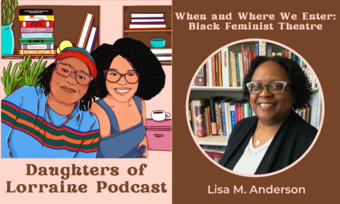


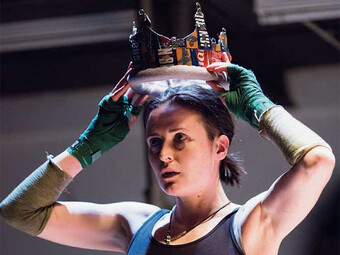


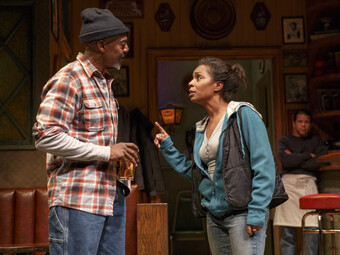


Comments
The article is just the start of the conversation—we want to know what you think about this subject, too! HowlRound is a space for knowledge-sharing, and we welcome spirited, thoughtful, and on-topic dialogue. Find our full comments policy here
Blufftonee posted a comment that, in its link, refers to Title VI. Title VI has nothing to do women and
gender discrimination, but applies to discrimination (by those who receive federal funding) based on ‘race, color or national origin.’ It would be outstanding if Title VI were expanded to add women, gender, LGBTQI, sexuality, sexual orientation, disability. And, even better, if it were then enforced against theaters that fail to end overt and covert discrimination.
The Jubilee project still violates title VI by excluding white male playwrights based on race. It is a clear violation of the Civil Rights Act. Theatres that receive federal funding cannot do this. It is illegal. It is overt discrimination.
I would also like to see other groups added and would hope their protections would not be explicitly violated as with the Jubilee project.
Dear Blufftonee. The Jubilee project can respond on its own, and I hope it will, but I do feel a need to correct your portrayal of it. The project, by its web details, is for "women, people of color, artists of varied physical and cognitive abilities, and LBGTQA artists." Presumably the "artists of varied physical and cognitive abilities" and "LBGTQA artists" also include many white male playwrights.
I hope they do. Is your contention that it does not discriminate against straight white men? They are excluded. This is illiberal. This violates title VI. It's wrong. I don't care if I agree with the project (I do). Morally, I support it. Ethically, it's unacceptable.
Dear Blufftonee. Now, you refer to a new and even more narrow categorization of "straight white men." The reality is that, presumably, "artists of varied physical and cognitive abilities" also include "straight white men."
I am an able bodied straight white man. Will I be systematically excluded on the basis of race and sexuality? Yes. Can federally funded projects discriminate by race? No. You could make the argument that since I'm straight and sexuality is not covered by title VI, I can legally be discriminated against on that basis, but then we will have left the rhealm of ethics behind entirely, if we have not long ago done so.
Are you comfortable systematically discriminating against artists based on *any* combination of gender, race, sexuality, or level of physical or cognitive abilities? I'm not. It is indefensible. We either condemn this practice for *everyone* or no one. We will not solve inequality with institutionalized inequality.
You can continue to split hairs on whether straight white men will be represented in some form, and I will continue to say it is unacceptable in ANY form. Because it is. We talk a lot about systematic discrimination. That's what this is. And if an artist wants to make a title VI complaint, they can, and they will win.
Dear Blufftonee. It is indeed sad that you, a straight, white, able-bodied, mentally able male, may fall outside the circle of protection of Title VI, prohibiting discrimination (by those accepting federal funds) by "race, color or national origin." That was my original point.
Women have never been included in that circle of protection based on gender. Remediating Title VI, other federal laws, state laws, union agreements and voluntary commitments by people in the theatre could be a real tool to securing gender parity and ending the inequality that is the subject of Jenny Lyn Bader's article. We are at a crisis level.
Your solutions to this problem are most welcome, I'm sure.
So you are saying since I fall outside of title VI, you have no qualms intentionally, systematically discriminating against me based on my gender? In what way is this acceptable? Your solution to an inequality of outcome is to create an inequality of opportunity?
It does not matter what my gender is, creating a policy discriminating based on it is unacceptable.
My solution would be what howlround and writers such as yourself are doing, calling out the problem. It's working. Not fast enough, not good enough, but the alternative of judging every artist based on things they cannot control is morally and ethically wrong. It goes against every liberal value. It is against the individual, it removes the content and ideas of a work as the primary concern. It's wrong.
Dear Blufftonee:
If you read my posts, you can read what I am saying. Please don't impute other messages to me, or make other assumptions, or try to add me to your narrative.
I will note that the article by Jenny Lyn Bader shows that "calling out the problem" -- now ongoing actively for four decades and even dozens of decades -- has met meager success. More robust solutions are required if we are to gain traction on equality in the theatre in our lifetimes.
My narrative? Do you support discrimination based on race, gender, sexuality? Yes or no? Because that's what your replies indicate. I will say, actual institutionalized discrimination is a most robust response.
Dear Blufftonee. Your narrative does not offer solutions. I have no intention of being drawn into your blame and anger, nor will I accede to your demands of me. I point out, for the 4th time, that the circle of protection provided by Title VI does not cover the situation you describe, as you have asserted.
I will note that many activists for equality have always argued that gender disparity hurts men as well as women. If you research the cases brought by Ruth Bader Ginsburg as a lawyer for women's rights, she used men who experienced gender discrimination as the centerpiece (believing that an all-male US.Supreme Court would be unable to understand otherwise). A case, for example, might feature a man in the military who was denied benefits as a widower.
In the theatre, it is women who have suffered acute gender discrimination for years under the brunt of this overt and covert bias.
Blufftonee, please consider what you going to do to advance the equal representation of all people. Thanks for the conversation.
Thank you so much for the fantastic summary Jenny! When I moved back to Denver from New York in 2010, I too, had been tracking the under-representation of female artists in theatre (as well as in other art forms but more informally). It’s exactly why I started Athena Project. In Denver, we are home to And Toto Too and The Denver Center for the Performing Arts which have both supported female playwrights for over 10 years, but we needed another way to draw further attention to the under-representation of female artists in all art forms. As I was speaking with artists in other disciplines, I discovered they were experiencing the same frustrations of under-representation in music, visual art, comedy, and dance. Our goal became how to draw attention to the disparity and take action; from this the annual Athena Project Arts Festival was born. In our 5th year, the festival is a way to highlight the work that is happening in a positive way. And while, we aren’t a theatre company per say, theatre is a core component of what we do. During the festival we workshop 3-4 plays and select one of these plays to be fully produced, by us, and be our World Premiere in the following year. In addition, Athena Project, completed a survey last fall that found that our numbers of female playwrights produced in the Rocky Mountain Region to be slightly better than national averages but still appallingly low. When we took into account women of color in leadership positions, we found they were non-existent. We plan to continue the study each year and grow the data we gather to include the other artistic disciplines we represent. We are very pleased to see so much discussion around this issue. We feel Denver is taking a proactive role in addressing gender parity and we are glad to be in such a supportive environment. Thank you again for your work in pulling this article together, Jenny, and we welcome further connections from other female focused organizations who are doing similar work. – Angela Astle, Executive Producer and Founder, Athena Project
How do you respond to charges Howlround's Jubilee project is discriminating against male playwrights by witholding federal arts funding to men?
http://www.nationalreview.c...
Hi there Blufftonee. Wow. You're responding to an article about gender and discrimination against women by referencing Title VI which doesn't apply to gender or discrimination against women -- it applies to discrimination by federal contractors based "race, color and national origin." That's a lot of confusion! You have a great idea, though, that Title VI should be expanded to prevent discrimination based on gender, sex, sexual orientation, LGBTQI status and disability. I am so happy to hear you support this idea. (Can we get your vote for an Equal Rights Amendment, too?) And your second great idea is that this law be enforced against existing theaters that get federal funding and discriminate against by 'race, color and national origin,' and, when we get that expansion -- also by gender, sexuality, LBGTQI status and disability. Terrific thinking! (I also note that the Jubilee proposal does not exclude men since it applies to "people of color, artists of varied physical and cognitive abilities, and LBGTQA artists" -- who, one can reasonably presume, are at least 49% male.)
Hi, thanks for sharing this interesting and provocative National Review article. I had not seen it before. You raise a valid question: should theatres that produce only one gender receive federal arts funding? Women at times have had the same question. Indeed, a White House petition circulated a couple of years ago calling for such funds to be restricted from theatres that produced exclusively men. I’m curious to see what happens next and would welcome some movement there, but I doubt any effort to connect arts funding to gender of artists given opportunities will succeed. It has not in the past.
As Cindy Cooper has pointed out in the thread below, title VI of the Civil Rights Act of 1964 does not apply to gender discrimination. Title IX does apply to gender, but only for educational institutions. Title VII covers businesses of a certain size, with employees who work a certain number of hours. So Civil Rights law does guarantee equal opportunity for those working in theatre administration at certain institutions, for example. But it doesn’t apply to individual artists. It could be argued that the NEA should be covered but that hasn’t been the interpretation up till now.
Further, there is already governmental funding for certain institutions whose missions emphasize hiring women, or exclusively support artists of color, and those groups have not been deprived of funding on civil rights grounds; the Jubilee is just asking more institutions to expand—or narrow—their mission for one year. Whether you think the Jubilee is a good idea (giving visibility to marginalized populations and voice to the rarely heard) or a terrible one (an instance of reverse discrimination reflecting a “year of the woman” mentality that points up ghettoization and a year later returns us to the ghettoized status quo) I don’t think that under our current legal system it can be challenged in the way this article suggests.
I appreciate the comments but I also say the explicit exclusion of white writers could be a title VI concern. The matter is complicated by the fact that other factors are involved, such as gender and sexuality. The fact that we having to discuss the fine points of the Civil Rights Act to see if we are actively violating someone's civil rights by selecting writers on the basis of a combination of race, gender and sexuality is a cause for concern.
It is irrelevant if I support the cause (I do). It is irrelevant which gender, which race, which sexuality is excluded. We either judge everyone by some combination of identity factors, or we don't. We shouldn't. We can't.
As a member of the Committee of the Jubliee, I wanted to jump on this thread and share the Committee's response, which can be found https://jointhejubilee.org/.... I also want to quickly respond that the Jubilee is not "HowlRound's." HowlRound was kind enough at the outset to make space for us, the theatre practitioners that comprise the Committee, to host the Jubilee information on its website/platform. Since then, we have migrated off.
Brilliant article. So much research and insight. The International Centre for Women Playwrights stsrted a programme of recognising theatres who " Share the Cake" equally with male and female playwrights across a whole season. it is an international project - the 50/50 Applause Awards - last year gave out 107 awards. They are currently running a Generosity Campaign to raise funds to expand the team of researchers and provide funds for administering the awards. The awards are like a Certificate of Standards achieved, like a fire cerificate or building safety certificate. No theatre should open without one. See http://www.womenplaywrights...
In 1990, the Womenkind Festival was formed in NYC to provide performance opportunities for women through a festival of one-woman shows. Plays and other works needed to feature one woman on stage, but could be written, directoed or submitted by anyone. We began with five artists over a weekend and grew, over our ten years, to frpeature over 35 artists during the course of the month.
We created a model that made producing affordable, enabsled artists to work toward their career goals and created an incredible network.
While I am proud of what we accomplished, I am appalled by the lack of progress since.
Great research on this important topic.
Hello, really good article. Thank you!! One thing to add to it. The League of Professional Theatre Women has a very active Spanish Branch since world theatre day 2016.
Thanks for including 'Not Even' in your list of studies! Those interested in gender parity efforts in the San Francisco Bay Area can see my continued monthly posts at www.worksbywomensf.wordpres....
And what else can we do? Make women visible and support womens' work. Audition with monologues by female playwrights. Include women in your list of folks anytime someone says 'hey do you know any fight choreographers/actors who sing/set designers/etc.' include a woman EVEN IF they say they're looking for someone who can play Willy Loman. Studies show men will submit themselves for work when they meet approx 50% of the criteria listed, but women don't do it unless they feel they meet all the criteria. So let's promote each other - let's see the shows that women make, and invite our friends to come with us and then talk about those shows loudly and everywhere!!
How many female playwrights are there compared to male playwrights? That could skew your numbers. And are you including William Shakespeare as a male playwright? Shakespeare dominates English theater as no artist does in any other creative field, except maybe Picasso in modern art.
I think the emphasis on production as validation has always served to discourage writers from playwriting. Nobody can stop you from writing a play as a literary work, so it would empower writers if you encouraged them to do just that, and stop making such a big deal out of getting a production.
I think you should accept the reality that we won't stop arguing, publishing, and working towards gender parity on every level of our field, from teaching to creation to production.
Robert Robbins: These are excellent and important questions and ones I would have discussed in a longer format piece; thanks for asking! The central statistic in question (1 in 5 plays produced in in the U.S. is written by a woman) references only new plays. If we were to take into account work by Shakespeare — and Sophocles, Aristophanes, Euripedes, Aeschylus, Marlowe, Molière, Ibsen, Strindberg, Chekhov, Shaw, Wilde, Beckett, Brecht, Miller, Williams, O'Neill, Pinter, et al. — that proportion would be much, much lower than 20%. Most studies do not count revivals, and of course if they did they would be taking into account a long history dominated by plays by men. So I agree, it's always nice to include Shakespeare, but then we're looking at more dismal numbers for female playwrights. He doesn't account for the current divide.
As for the actual number of men and women writing plays, research has shown it's about even at the grad school level and then starts to get imbalanced at the higher levels of the profession. Women are well-represented in the independent theatre (off-off-Broadway) and then less represented off-Broadway, and even less than that regionally, and least of all in the commercial theatre. The numbers of women writing for Broadway have remained under 15% for a century.
Women don't submit their work as frequently as they experience discouragement going forward, so it's unclear whether they are writing fewer plays or writing as many and submitting it less — or more selectively. A producer once told me that after she issued a call for scripts with a number of requirements, she noticed men would submit a script that only fit one or two of the requirements, but a woman would tell her "my script only fulfulled 90% of the requirements so I didn't send it." Some people have drawn a connection between this sort of self-censoring and the marginalization that occurs in the profession.
You rightly point out that in the absence of productions women could be writing a play as a literary work, like the 10th century canoness pictured above, Hrosvitha, who never pursued productions and was "a closet dramatist." But that might be harder in this day and age as the art of reading plays has gotten increasingly lost.
As for your point about not getting discouraged, it is well-taken. Just because others discourage us doesn't mean we need to become discouraged... somehow we need to, nevertheless, persist.
Wonderful, Jenny Lyn. Thank you.
This is simply brilliant. Thank you!
Congrats on pulling together a 360 degree view of the problem!
Excellent research and writing! I'm sharing.